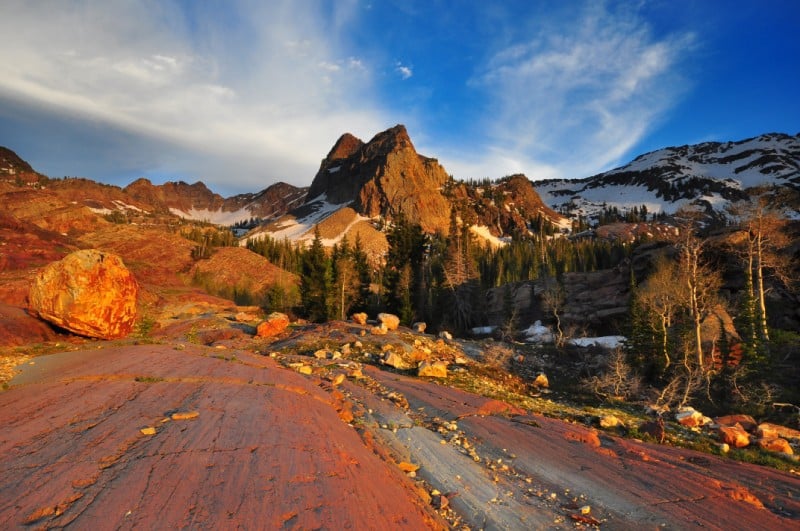
Big Cottonwood Canyon Facts
- Big Cottonwood Canyon forms an extremely picturesque canyon located in a section of the Wasatch Mountain Range, in North America.
- The canyon remains extremely popular with tourists, partly because it contains numerous small lakes surrounded by terrain perfect hiking. Some trails hikers easily manage, while others tend to be quite arduous.
- It also represents an extremely popular destination for school field trips, since the numerous fields contain bountiful numbers of wildflowers.
- Among these are several endemic species that also rank as extremely rare.
Related Articles
Big Cottonwood Canyon Physical Description
Firstly, the stunningly beautiful, and appropriately named, Big Cottonwood Canyon measures roughly 15 mi (24 km) in length.
Secondly, this impressive geological beauty formed primarily because of the motion of the similarly named Big Cottonwood Creek.
In addition, the remarkable location has a sharply V-shaped formation and serves as home to numerous impressive rock formations.
This gorgeous canyon also forms a watershed canyon, and the waters that flow through it represent the principal source of drinking water for the Wasatch Front.
The ancient glacial activity also played a large role in the formation of this gorgeous location. The glacier receded roughly 10,000 years ago.
Big Cottonwood Canyon Location and Distinctiveness
The appropriately named, and visually quite stunning, Big Cottonwood Canyon lies situated in the state of Utah, in the United States.
Also, the weather conditions vary with great extremes from one end of the canyon to another, regardless of the season.
Snow also commonly reaches depths of as much as 15 ft (4.6 m) at the top of the canyon, while the bottom of the canyon remains devoid of any snowfall.
In the winter, Big Cottonwood Canyon also serves as one of the most frequented locations for skiers and snowboarders in the entire country.
For that reason, pets and any other domesticated animals remain forbidden within its boundaries.
It also serves as home to a wide variety of beautiful plant life, including flowers and numerous cottonwood trees.
Some of these plants also rank as quite rare, and in fact, one of them can be found nowhere else in the world.
Features Sharing Its Region
Check out our other articles on 5 Beautiful North American Birds, Wadi Rum, Spooky Gulch, Yeti Crab, Olive Ridley Sea Turtle, Southern Darwin’s Frog, Great Dismal Swamp
